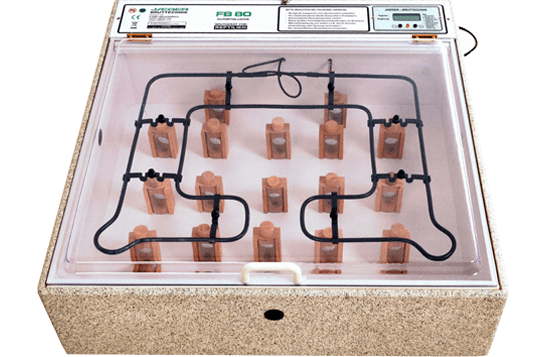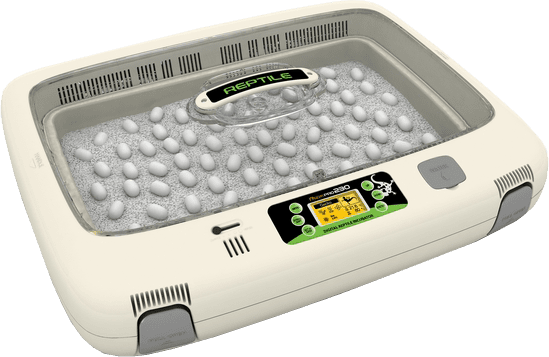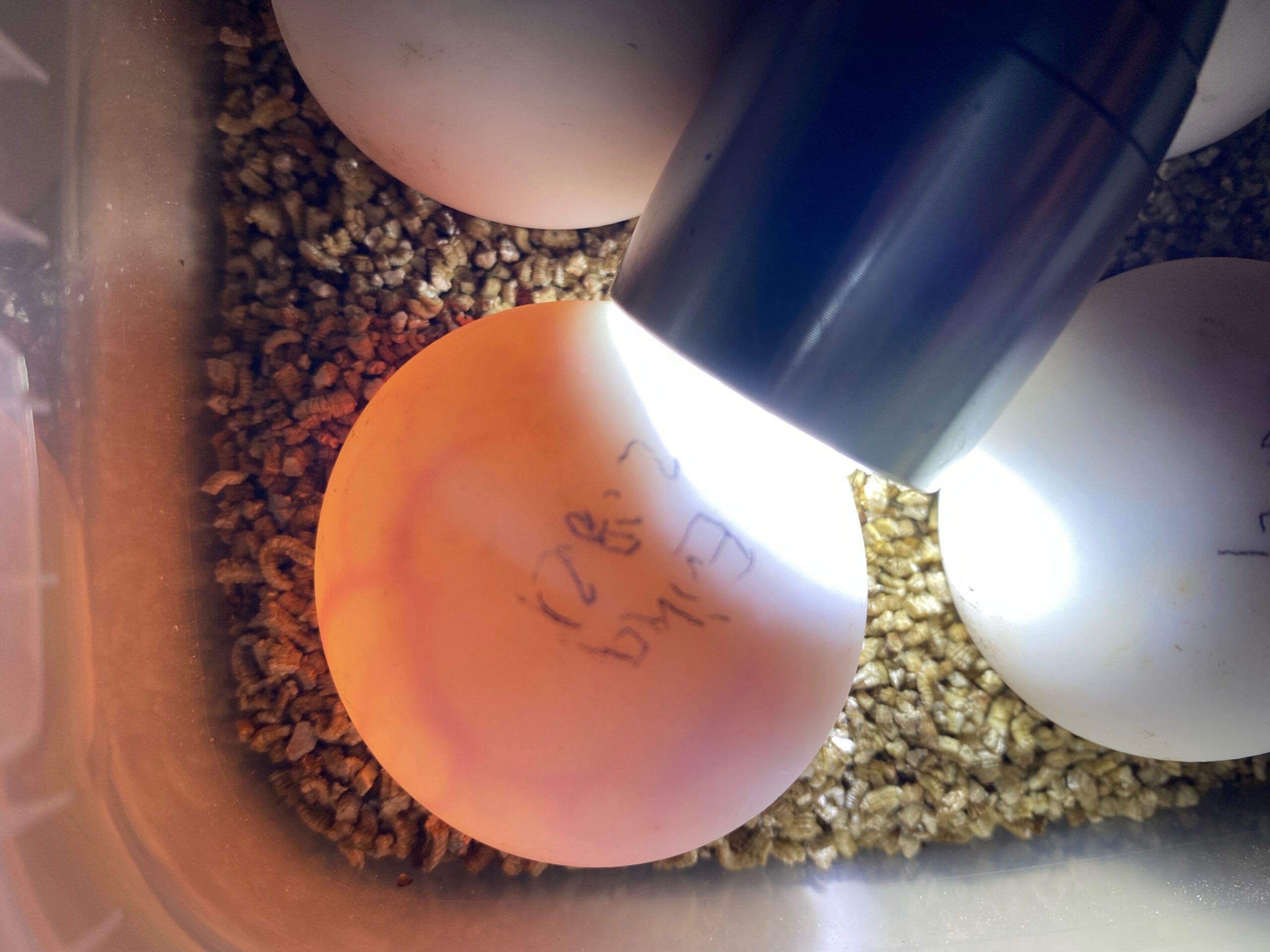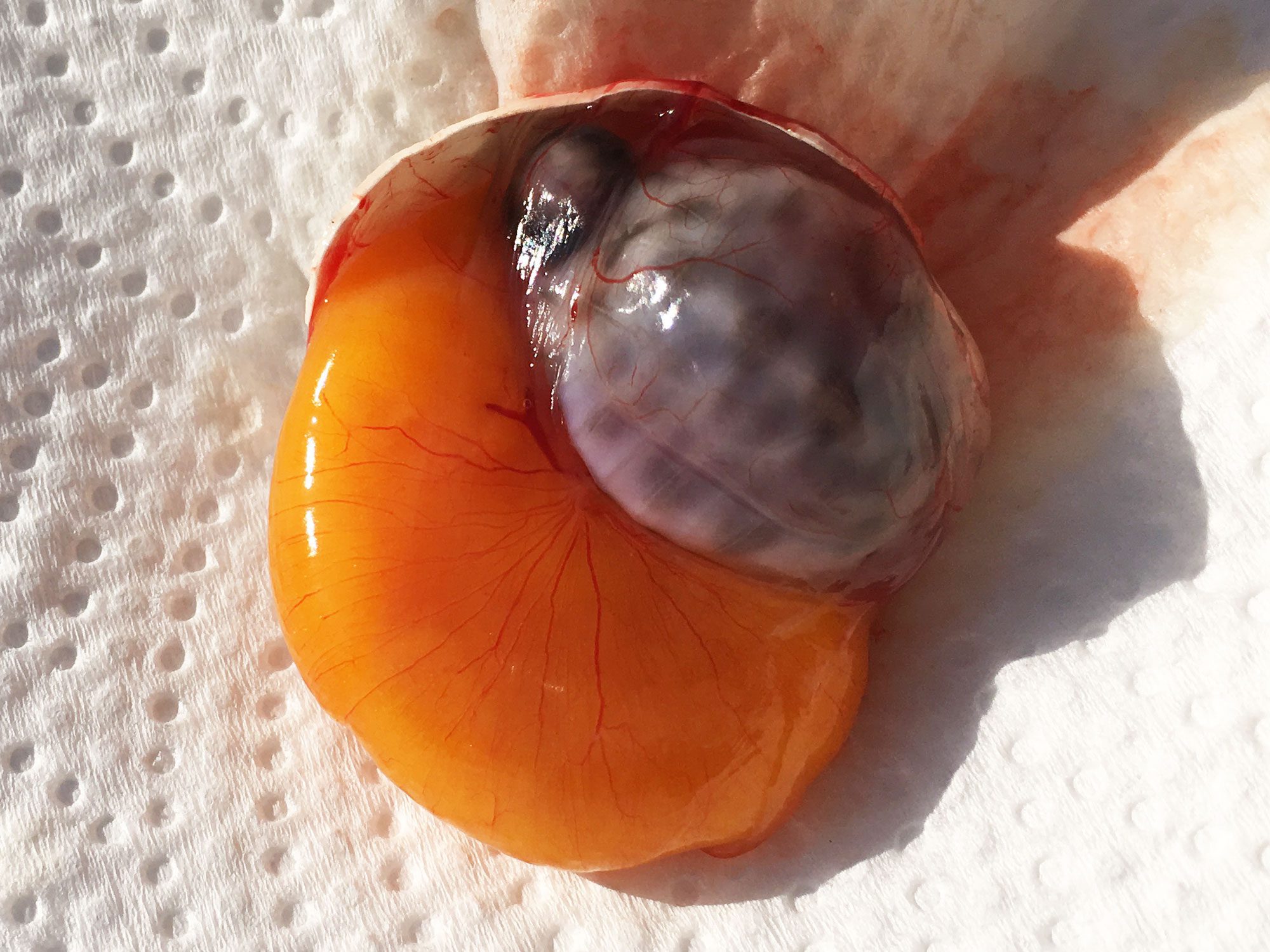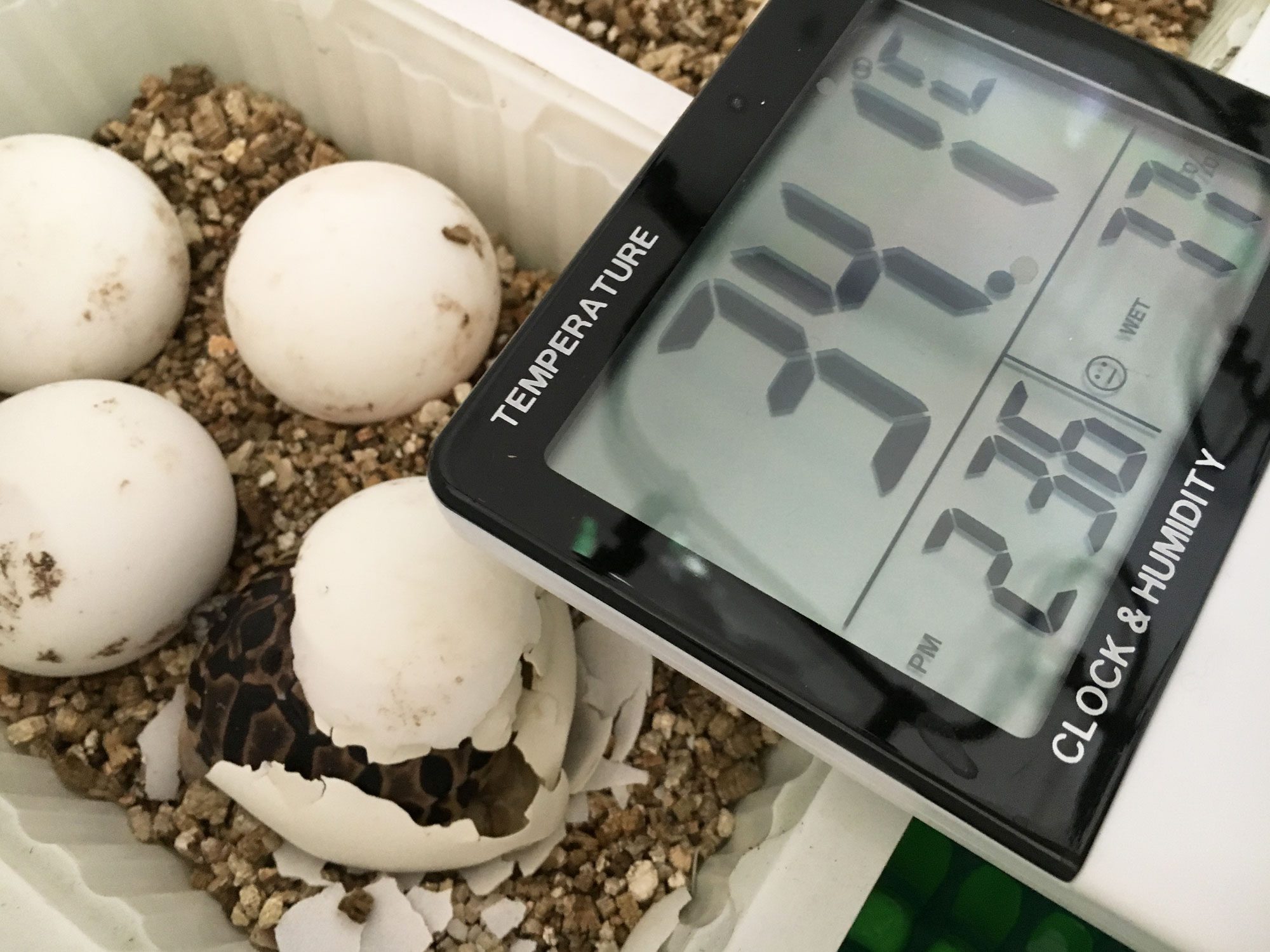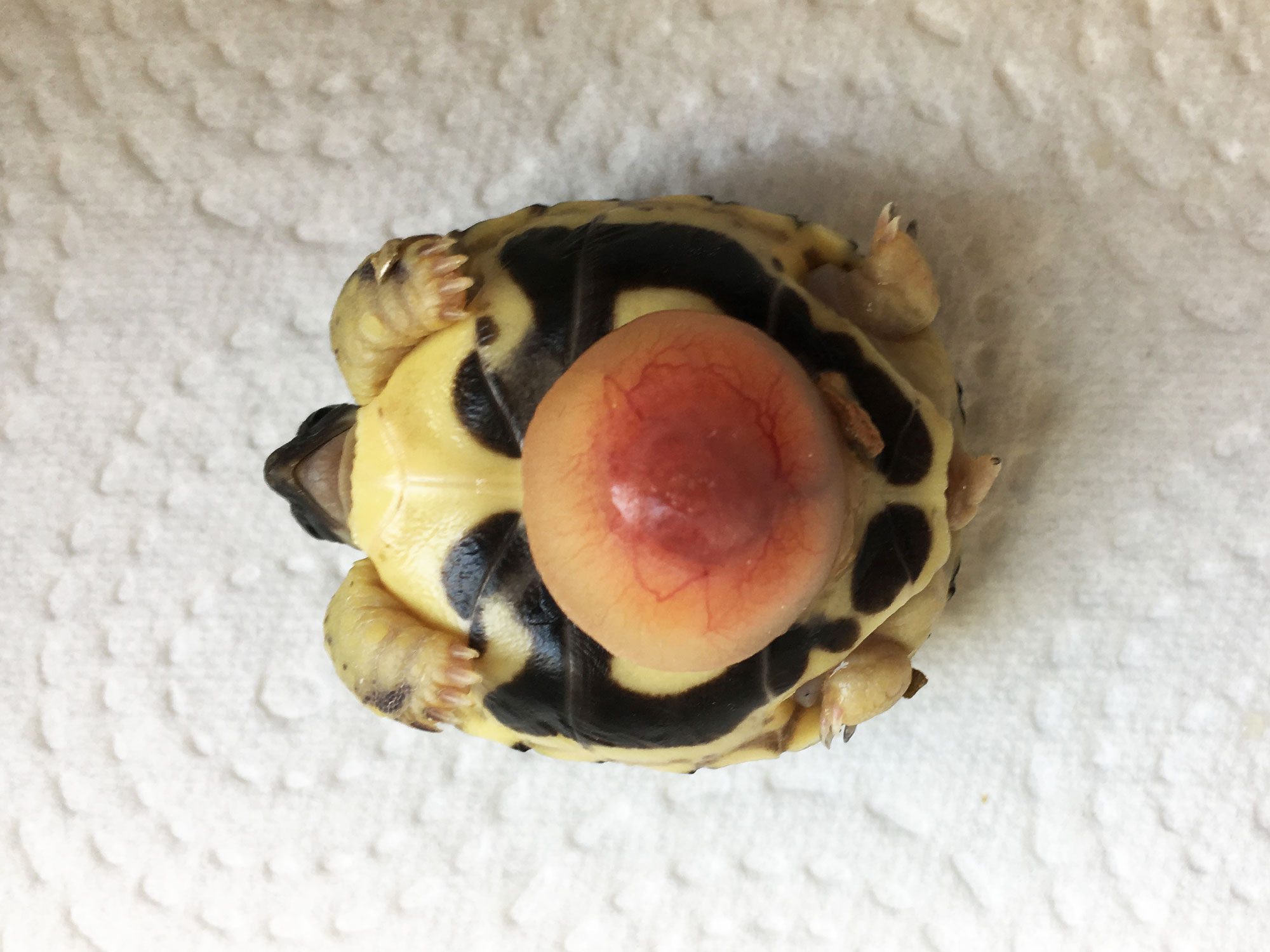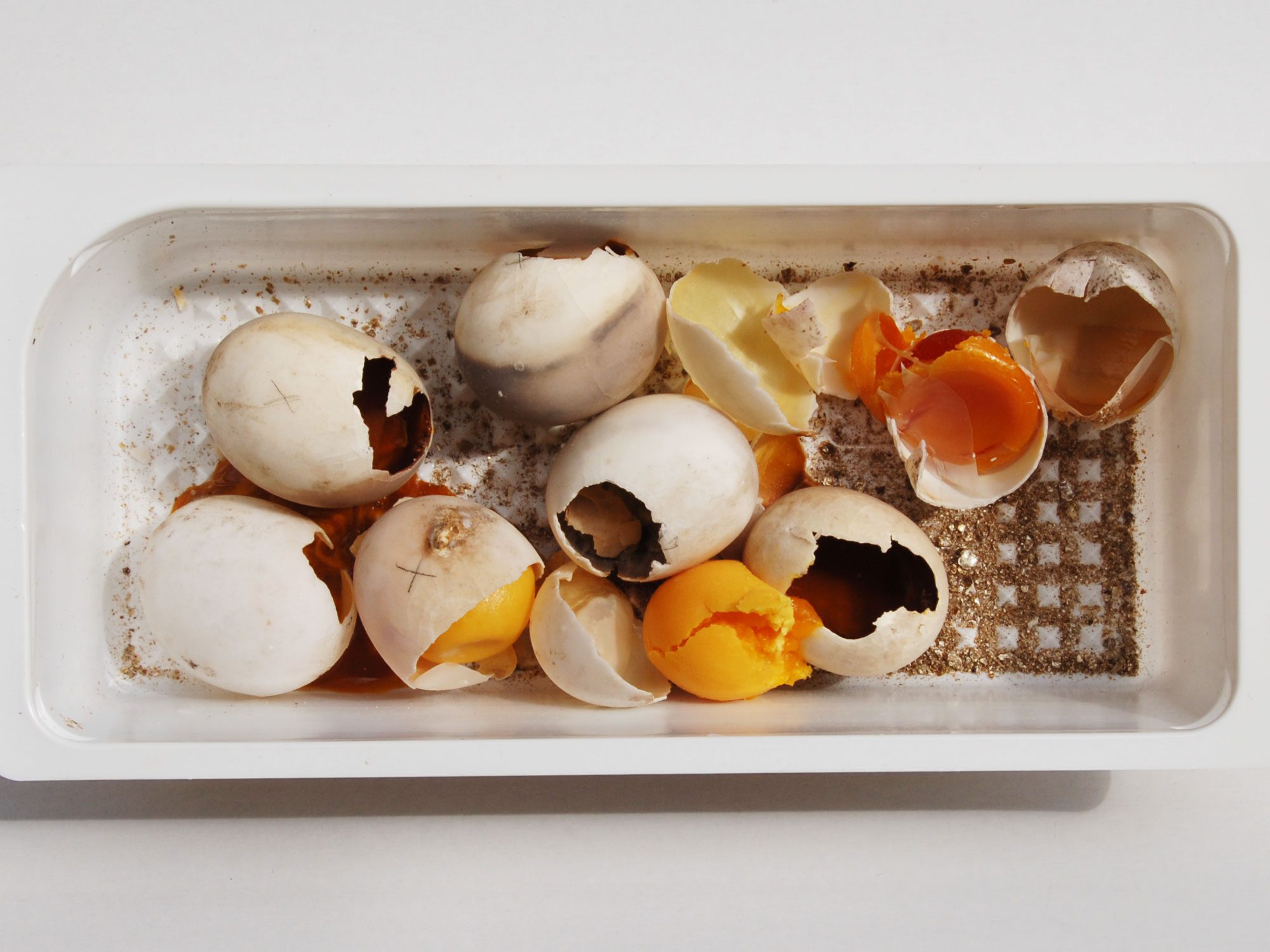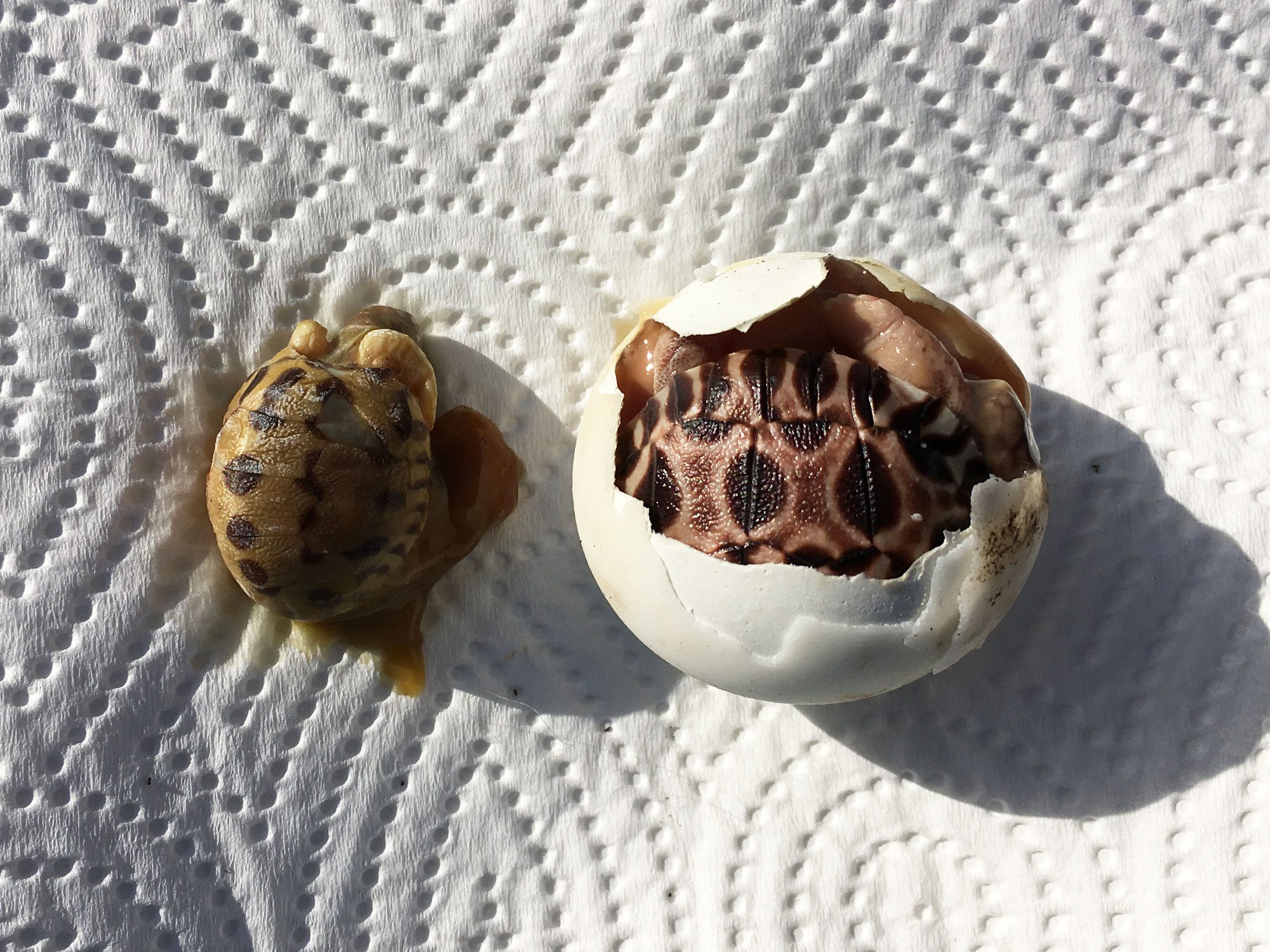Strahlenschildkröteneier sind entwicklungstechnische Überraschungseier
Das Ausbrüten von Strahlenschildkröteneiern ist unglaublich spannend und erfordert etwas Geduld, denn eine sicherer Prognose über die Brutdauer lässt sich nicht machen. Die Eier eines Geleges können unterschiedlich lange für ihre Entwicklung brauchen (bimodale Entwicklung). Diese Variable im Brutzyklus könnte eine Anpassung an einen extrem trockenen Lebensraum sein, wobei unterschiedliche Entwicklungszeiten eventuell das Schlüpfen in nahrungsreichen Regenperioden begünstigen sollen. Es ist auch gut möglich, dass die Entwicklung des Embryos reizgesteuert ist, d.h. durch das Ansteigen bzw. Abfallen von Temperatur und Feuchtigkeit gesteuert wird. Besonders populär und auch empfehlenswert ist deshalb das Bebrüten nach madagassischen Jahreszeiten (in der Emys Ausgabe Jahrgang 9 / Heft 2 wird diese Methode detailliert beschrieben).
Nach der Eiablage werden die Eier vorsichtig ausgegraben, ohne sie zu drehen mit warmen Wasser gesäubert, an der Oberseite markiert (z.B. mit dem Legedatum und Name des Weibchens) und in mit Vermiculite gefüllte Plastikschalen überführt. Alternativ eignen sich auch andere grobkörnige Substrate wie Blähton, Sand, usw.. Substrate, die zuviel Feuchtigkeit aufnehmen sind ungeeignet. Auch das Eingraben der Eier in das Substrat hat sich in Brutapparaten aufgrund der Bildung von Staunässe nicht bewährt. Zu hohe Luftfeuchtigkeit und Wassertropfen auf dem Ei lassen den Embryo esrticken und das Ei fault oder schimmelt. Wir setzen die Eier einfach auf grobes Vermiculite und kuhlen sie nur leicht ein, so dass sie nicht wegrollen können.
Zum Bebrüten von Strahlenschildkröteneier haben sich die folgenden zwei Brutapparattypen bestens bewährt. Beide Modelle verfügen über eine Tag-Nacht-Temperaturfunktion, und es können auch hohe Temperaturspitzen programmiert werden.
Grundsätzlich sind beim Inkubieren von Strahlenschildkröten verschiedene Temperaturmodelle möglich. Eine Zeitigung bei relativ modereaten, gleichbleibenden Temperaturen von 29 – 31°C, während 24 Stunden, ist ebenso möglich wie Brutschemen mit einem deutlichen Tag-Nacht-Temperaturgefälle. Eine erfolgreiche Zeitigung erfolgt z.B. problemlos bei 30°C – 33°C während 10 Stunden und 24°C – 28°C während 14 Stunden. Die Luftfeuchtigkeit beträgt immer ca. 70 – 80%. Die Wasserreservoire der jeweiligen Brutapparate bleiben immer ganz gefüllt. Die Eier werden jedoch nicht besprüht und das Substrat auch nicht extra angefeuchtet. Wassertropfen, welche sich um die Eier ansammeln und stauen können, sollten unbedingt vermieden werden.
Eier, die befruchtet sind, können bereits nach 14 Tagen beim Durchleuchten den Beginn einer hellen Entwicklungsbinde zeigen. Dadurch wirkt die Eischale von befruchteten Eiern deutlich weisser als jene von unbefruchteten. Eier, die beim Durchleuchten ganz hellgelb und blass erscheinen oder bei denen sich der Dotter abgesenkt hat und dunkel verfärbt, sind unbefruchtet und zeigen bereits Zersetzungserscheinungen. Eier, die sich hohl und leicht anfühlen oder zu riechen beginnen, können mit gutem Gewissen zur Überprüfung des Inhaltes aufgeklopft und entsorgt werden. Eier, die jedoch beim Durchleuchten eine unauffällige, indifferente und normale Färbung zeigen und keine Anzeichen von Schimmelbildung oder Fäulniss aufweisen, haben immer noch das Potential zur Weiterentwicklung und sollten unbedingt weiter inkubiert werden.
Strahlenschildkröteneier, die nach Monaten im Inkubator keine Entwicklungszeichen zeigen, können experimentell für ca. 2 – 3 Monate dunkel, trocken und kühl bei ca. 10 – 15°C gelagert werden und anschliessend wieder in ein reguläres Brutschema überführt werden. Wir stellen die Hypothese auf, dass eine Diapause vermehrt dann eintritt, wenn die Teperaturkurven beim Bebrüten eher flach und annähernd konstant sind. Dabei ist es völlig unabhängig, ob es sich um hohe, mittlere oder niedrige Temperaturen handelt. Wir vermuten, dass bei Gelegen, die bei ausgeprägten Temperaturkurven mit einem deutlichen Tag- und Nachtgefälle bebrütet werden, keine Diapause vorkommt. Das selbe Prinzip gilt auch für die Luftfeuchtigkeit. Je deutlicher ein Triggerreiz in Form von ausgeprägter Luftfeuchtigkeit- und/oder Temperatur initiert wird, je unwahrscheinlicher kommt es zu einer Diapause. Einige Züchter*Innen wenden eine künstliche Diapause mit Kühlen der Eier jeweils zu Beginn eines Brutzykluses präventiv und erfolgreich an.
Befruchtete aber noch nicht entwickelte Eier von Strahlenschildkröten zeigen eine erstaunlich hohe Toleranz gegenüber starken Temperaturschwankungen während dem Tag und der Nacht sowie saisonal bedingten, gleichbleibenden kühlen Temperaturen. Trotz extremer Bedingungen können Eier noch nach über einem Jahr (!) das Potenzial zur Entwicklung haben. Für diese erstaunliche Fähigkeit sind vermutlich noch gänzlich unerforschte biochemiche Prozesse im Eiinnern verantwortlich, die ein vorzeitiges Verderben verhindern.
Geschlechtsspezifisches Brüten
Aufgrund des akuten Weibchenmangels in vielen Beständen brüten wir nur noch mit hochtemperaturigen Brutschemen, um möglichst viele Weibchen zu zeitigen. Experimentelle Ansätze mit langen, hohen Temperaturen führten dazu, dass die Embryonen in den Eiern vermehrt austrockneten und abstarben. Es stellte sich die Frage, wie ensteht eigentlich eine ausgewogene Geschlechterverteilung in der Natur, und wie können wir das Modell zugunsten eines hohen Weibchenanteils abändern? Konstante, hohe Temperaturen wie in Bruttapparaten von über 33°C während 24 Stunden kommen in Bodennähe und Nistgruben in der Natur nicht vor und trotzdem schlüpfen die Geschlechter in freier Wildbahn immer relativ zuverlässig equilibrium, wie kann das sein? Weibchen werden bekanntlich bei hohen Temperaturen gezeitigt, welche in der Natur nur über die Mittagszeit, bei Sonnenhöchststand, entstehen können. Tatsächlich beträgt die Temperatur in Eigruben über die Mittagszeit oft deutlich über 34°C jedoch nur für kurze Zeit. In der Natur sind also für die Zeitigung von weiblichen Embryonen primär hohe Temperaturspitzen von +34°C über einen Zeitraum von ca. 3 Stunden nötig, um bereits eine relativ ausgewogene Geschlechterverteilung in einem Gelege zu ermöglichen. Verlängert man die hohen Temperaturspitzen von +34°C auf 5-6 Stunden pro Tag, verlagert sich die Geschlechterverteilung automatisch zugunsten von weiblichen Emryonen. Die folgenden, längeren Temperatursenkungen während der Nacht haben wie in der Natur offensichtlich keinen entscheidenden Einfuss auf die Geschlechterdeterminierung. Alleine das Erreichen von relativ hohen und kurzen Temperaturspitzen während des Tages sind dafür verantwortlich. Die Geschlechtsentwicklung ist im ersten drittel des Brutzyklus bereits abgeschlossen. Eine starke Temperatursenkung während der Nacht auf 24°C ist sogar erwünscht, um die Embryonalentwicklung überhaupt zu initieren und um eine Diapause zu vermeiden. In der Natur sind aber auch noch ander entscheidende Faktoren für die geschlechtsbestimmende Bruttemperatur in Nistgruben verantwortlich: Bewölkte Tage, die Tiefe der Nistgrube und Lage der Eier im Nest aber auch der je nach Sonnenstand erzeugte Schattenwurf von benachbarter Vegetation oder Gegenständen (z.B. Bäume, Sträucher, Steine, Wurzeln, Erdhügel, etc.) können entscheidenden Einfluss auf das Klima in Schildkrötennestern haben.
Wir empfehlen für die Zeitigung der Geschlechter folgende Brutschemen:
Wir vermuten den Scheitelpunkt beim geschlechtsspezifischen Brüten von Strahlenschildkröten bei 32.8°C. Bei langen, hohen Bebrütungstemperaturen schlüpfen die kleinen Schildkröten oft zu früh, so dass der Dottersack noch nicht vollständig aufgebraucht ist. Sind die Bebrütungstemperaturen zu hoch und ausgedehn, sterben die Embryonen in der Hälfte der Entwicklung im Ei durch Austrocknung ab. Panzeranomalien scheinen bei unnatürlichen, gleichbleibenden und hohen Temperaturen, wie sie in Brutapparaten oft angewendet werden, häufiger aufzutreten.

